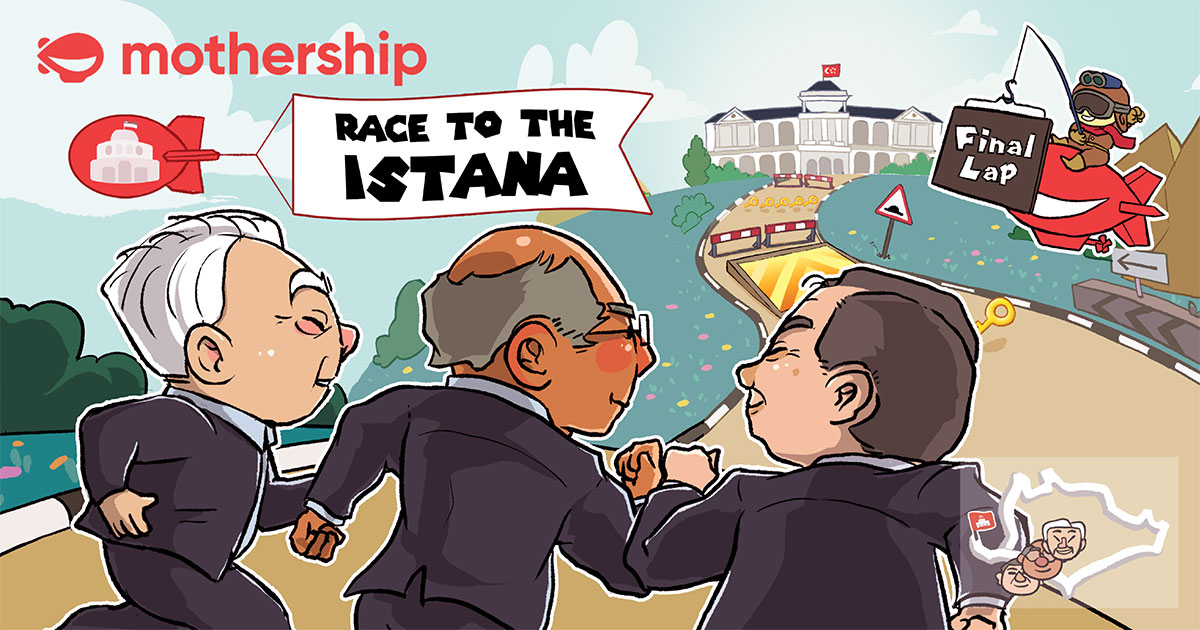How much does it cost to run for president in Singapore?
For the 2023 presidential election, the upper limit for each candidate's spending has been set at S$812,822.10.
Short answer: But if you have, say, S$100,000 to S$500,000, you're in luck as you have a sizeable amount of money in the coffers to utilise tactically, because that is minimally what you would very likely need to make a splash in public.
In the last contested presidential election in 2011, the amount spent by the winner and runner-up was more than half a million dollars each.
Long answer: Here is a breakdown of cost.
S$40,500 presidential election deposit
The first major cost is the election deposit that each candidate has to put up.
The money is refundable, provided the candidate gets 12.5 per cent or more of the votes cast.
For the 2023 presidential election, the deposit has been set at S$40,500.
This amount is much lower than the S$48,000 in the last contested election in 2011.
There is a formula for calculating the presidential election deposit.
In the 2011 round, Tan Kin Lian lost the entire deposit as his number of votes — 4.91 per cent of the total 2,274,773 votes — failed to garner more than one-eighth (12.5 per cent) of the total number of votes cast.
In the 2017 presidential election, the deposit was S$43,500.
But there was no contest that year due to a walkover, which saw Halimah Yacob emerge as president of Singapore.
How much candidates spent on publicity and campaigning?
At the 2011 presidential election, which was contested by four candidates, some S$1.32 million was spent in total by Tony Tan, Tan Cheng Bock, Tan Jee Say, and Tan Kin Lian.
Tony Tan, who won, spent S$503,070.
Second place Tan Cheng Bock spent more, at S$585,045.
Tan Jee Say spent S$162,337, while Tan Kin Lian spent S$70,912.
Spending required despite walkover
In 2017, despite it being a walkover, Halimah spent around S$220,000 on her campaign.
The expenses included S$73,000 for 10,100 campaign posters, S$20,300 for 200 PVC banners, measuring 4.5m by 1.2m each, and S$36,400 for 1.28 million postcards to be sent to homes islandwide.
She also bought 10,000 fridge magnets for S$3,000, and 530 umbrellas for S$1,640.
But they were not deployed.
Online campaigning saw S$29,000 spent on video production and S$16,000 spent on a website.
Some S$8,900 was paid to NTUC Centre for room rental, car park charges, and other miscellaneous facilities.
Food for volunteers costs some S$3,400.
Her campaign managed to raise S$800,000 from six individuals and one marine company -- the leftover donations were returned to donors.
The other presidential hopefuls at that time, Farid Khan and Salleh Marican, spent S$200,000 and S$90,000, respectively.
Limit of S$812,822.10 spending for PE2023
Candidates can spend up to S$812,822.10 in election expenses for the upcoming presidential election.
According to existing rules by the Elections Department (ELD), a candidate has a maximum spending limit of S$600,000 or 30 cents for each elector on the Registers of Electors for all electoral divisions, whichever is greater.
In this round, a total of 2,709,455 electors are eligible to vote — an increase of over 55,000 people from the 2,653,942 electors in the last general election in 2020.
In 2017, the limit was S$754,982, while in 2011, the limit was S$682,431.
Spending more than the limit is illegal.
Candidates can receive donations from the public.
Singapore citizens aged 21 years and above, or companies that carry out business wholly or mainly in Singapore with a majority of its directors and members who are Singapore citizens, are allowed to make political donations.
Top illustration by Jessin Goh
If you like what you read, follow us on Facebook, Instagram, Twitter and Telegram to get the latest updates.



